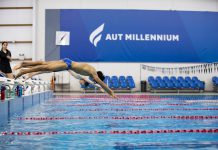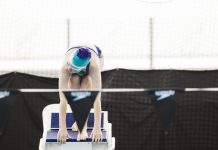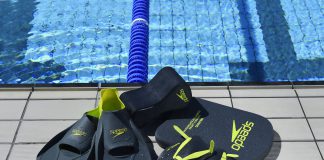Although all four swimming strokes are different from each other, they all share one aspect that is essential, and that is having a good feel for the water. Speed in the water isn’t just from strength or technique of the stroke. If your child is not able to feel the water correctly, they may struggle to improve further.
There are a few different ways to get a better feel for the water, but sculling is one type of drill that can be used for all four strokes. It can significantly help your child to not only increase their speed in the water, but also help their feel, which will in turn improve their technique. Sculling is used throughout the swimming world, right through to swimmers training at Olympic level.
No matter which stroke your child would like to improve in, there are sculling drills to suit.
Freestyle:
- There are a few different ways of sculling to improve the feel for freestyle. One way is to have your arms extended out in front and create a small figure of eight movement whilst turning your hands inwards and outwards. This will help to increase the feel of the initial catch.
- Windscreen wipers scull: This relates to the main catch of the stroke where the figure of eight movement is created while keeping the elbows still on the surface of the water. The figure of eight motion is slightly bigger in this drill, and should be done straight down from the elbow creating a windscreen wiper effect.
- The third freestyle scull relates to the end of the stroke, where you create the same figure of eight motion, but down by your side. This helps to work on the feel of the exit of the stroke.
Backstroke:
- Backstroke sculling drills are very similar to freestyle, except are performed on your back. The first method is to be flat on your back and create the sculling motion down by your side.
- Another way is to go feet first and scull with your arms extended above your head, again creating the same sculling motion.
Breaststroke:
- Breaststroke sculling is slightly different as the motion you create will be at a larger scale compared to freestyle and backstroke. Again, this drill is done by having the arms extended, however the figure of eight motion is much larger to replicate the initial catch of the breaststroke arm stroke.
Butterfly
- Similar to the first freestyle drill, extend your arms out in front and create a small figure of eight movement by turning your hands inwards and outwards, all while maintaining a butterfly kick.
It is important to note that all of the sculling drills are slow, but can significantly help to gain a feel for the water. A pull buoy can also be used for added buoyancy in order for your child to focus more on their arms rather than staying on the surface of the water.
Hopefully these sculling tips will help your child gain more feel for the water and become an overall better swimmer!
If there are any technique tips you’d like us to tackle, let us know by emailing [email protected]






































